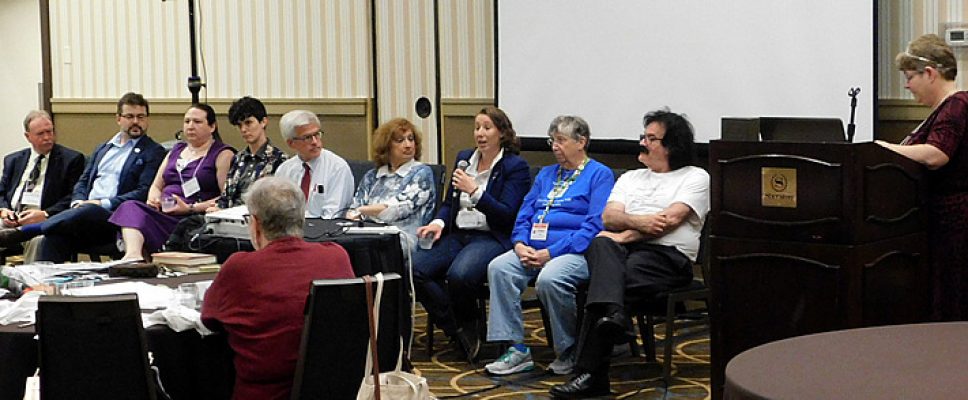Scintillation of Scions 2018
Mixing business with pleasure, we attended the Scintillation of Scions 2018 at a hotel near the BWI airport recently. Rather than drive down Saturday from Hershey, Teresa and I elected to spend the night at the hotel. This gave us a chance to scout out the location and meet some of the Sherlockians who will be attending the next day.


Nick Martorelli talked about Conan Doyle’s narrative strategies in his novels.
All in all, it was a great event. We sold a lot of books, but it was also fun joining about 80 Sherlockians to learn more about our unusual hobby.
For those unfamiliar with the event, Scintillation differs in many ways from a convention. The day is spent in one large room. Speakers deliver their papers, and there’s time in between for socializing and shopping. It’s a live performance of the “Baker Street Journal” with alcohol and lots of socializing.

The talks the next day were uniformly excellent, but I find pleasure in listening to anyone talk about something they’re knowledgeable and passionate about. I could go down the list of all of them, but then I’d never get this post finished. So here’s three that particularly caught my attention:

This feeds into my interest in the popularity of Holmes. Among all of the detectives, why him and not any of the others? Why did Holmes inspire so many parodies and pastiches that I could publish seven volumes during Conan Doyle’s lifetime (and enough for an eighth if I choose)?
I was thinking of Holmes as a virus, with simple infection points. There’s his appearance, his iconic uses of the pipe, cocaine, and magnifying glass, his relationship with Watson, the case of the Hound, and the simple set-up of the stories that sound like a joke: a woman walks into the room and says ….
Add to that Austin’s notion that Holmes embodied not just the hero archetype, but the wise man archetype, and his use of scientific advances. You end up with someone attracted to the hero investigating weird doings, the wise man who finds answers in a handful of dust, or the depth the parsley settles into the dish of butter on a hot day, and who has made a science of observation.


For those who haven’t read the story lately, it opens with Holmes and Watson taking a three-hour walk through London “watching the ever-changing kaleidoscope of life as it ebbs and flows through Fleet Street and the Strand.” Later, after an unsatisfactory interview, “we were in the street and walking for home. We had crossed Oxford Street and were half-way down Harley Street before I could get a word from my companion.”
Armed with these clues, Davies approached 17 Sherlockian experts and asked them to argue which routes they took through London. Then he took the data and created this poster, showing the consensus route and illustrated notable sights along the way with period photos.
Then he printed a two-sided suitable-for-framing poster containing the complete story that for design, taste, and ease of understanding cannot be bested.

And that’s what I got from Scintillation.
